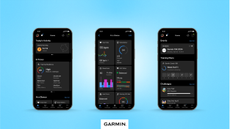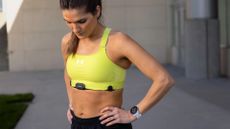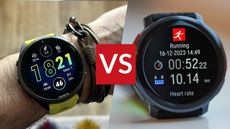Love them or hate them, fitness trackers are on almost every wrist in this day and age. This is partially due to our obsession to track as many bodily functions accurately as possible, but also because they come in so many shapes and sizes that everyone can find one that suits their needs, exactly.
From the literal sea of fitness tracker offerings out there, two brands stand out: Fitbit and Garmin. The former has been producing activity trackers before activity tracking was even a thing, manufacturing simple pedometers that could be clipped to sports bras and sports tight waist bands.
Ever since then, the name 'fitbit' became synonymous with activity trackers and is used interchangeably, like how mums around the world call every console a 'nintendo'. And now that Google acquired Fitbit, we will most likely to see a lot more smart features added to the Fitbit line up, pretty soon.
Garmin, on the other hand, is mostly famous its Forerunner watches, a running watch series that caters for athletes and tracks advanced sport metrics. Of course, Garmin doesn't want to miss out on the lucrative fitness tracker business either, so they rolled out some watches aimed at more casual users, like the Garmin Venu, the Garmin vivomove and the Garmin vivoactive series.
In this comparison, we picked one product from each brand which can be considered direct competition to each other: the Fitbit Versa Lite, a fitness tracker sitting on the top of our best fitness tracker list and the Garmin vivoactive 3, a competent watch with built in GPS.
Fitbit Versa Lite vs Garmin vivoactive 3: which one comes out on top?
- Best running watch: full of Garmin watches as well as Polar and Suunto offerings
- Best triathlon watch: no Fitbits on this list, but plenty of Garmin watches
- Best Fitbit: the household name in the world of fitness trackers

The Fitbit has a brilliant screen and a more noticeable design
3 reasons you should choose the Fitbit Versa Lite over the Garmin vivoactive 3
The Fitbit Versa Lite – as the name suggests – is the 'lighter' version of the Fitbit Versa, but this doesn't mean it's a dumbed down model. The Versa Lite has most of the features of the big Versa, apart from NFC payments, on screen workouts, music storage and some more advanced sports metrics, which is exclusive to the latter still.
What the Versa Lite has is smartphone notifications, over 4 days battery life, 15+ exercise modes, heart rate and sleep tracking and many downloadable apps through the Fitbit Store (many of them for free, too). And it looks pretty good as well!
But where does it really excel? We listed 3 reasons why you should choose the Fitbit Versa Lite as your next fitness tracker.

Loads of screen space on the Fitbit Versa Lite
- Best Fitbit deals: cheap Fitbit Versa 2, Charge 3, Ionic and the rest
Reason #1: The Fitbit Versa Lite has a bigger and more detailed screen
The Fitbit Versa Lite's screen is almost 12% bigger than the Garmin vivoactive 3's (1.34" compared to 1.2", respectively) and has a way higher resolution. The Versa Lite has a resolution of 300 x 300 pixels, which is higher than the Garmin vivoactive 3's 240 x 240 pixels.
The extra screen size and resolution is capable of displaying crisp images and it suits the many apps and clockfaces the Fitbit store has to offer, too.
Reason #2: The Fitbit Versa Lite is thinner and lighter
Truth to be told, neither of the fitness trackers in question are heavy, but of the Fitbit Versa Lite comes in ever so slightly lighter than the Garmin vivoactive 3 (Versa Lite – 38 grams, vivoactive 3 – 43 grams).
The Versa Lite is also thinner than the vivoactive 3, the former being 11.2 millimetres whilst the latter is 11.7 millimetres. Again, not a huge difference, but it might make Versa Lite feel a little less in the way. Fitbits are also famous for being comfortable to wear and the Fitbit Versa Lite is no different.
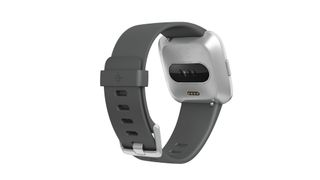
Sport activities detected automatically with the Fitbit Versa Lite
Reason #3: The Fitbit Versa Lite detects activities automatically
With the Fitbit Versa Lite, you don't have to worry about not starting the fitness tracker, it will automatically detect more than 15 different sport activities, including running, cycling, swimming, weight training but even yoga and pilates.
It can be pretty frustrating when you go out for a run, just to realise 15 minutes in that you haven't started tracking the activity with your watch. Might as well haven't gone for a run!
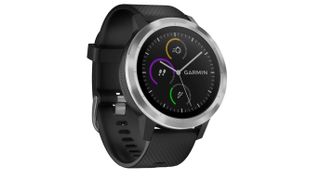
The Garmin vivoactive 3 wins on battery life, not to mention the integrated GPS
3 reasons you should choose the Garmin vivoactive 3 over the Fitbit Versa Lite
The Garmin vivoactive 3's successor has just recently been announced at IFA in Germany and it has undergone some improvements for sure. The vivoactive 3, though, is a still a very capable tracker with loads of great features and a pretty decent screen, too.
Garmin thankfully didn;t cut too many corners and included features and sensors in the Garmin vivoactive 3 they have in flagship multi-sport watches, like the compass, GPs and more.
Below are 3 other reasons why you should choose the Garmin vivoactive 3 as your next fitness tracker.
- Best cheap Garmin watch deals: from Forerunner to Fenix, find all the cheap Garmin watch deals here
Reason #1: The Garmin vivoactive 3 has a better battery life
One category multisport smartwatches will always win over fitness trackers and regular smartwatches is battery life. This is where the Garmin vivoactive 3's heritage shines through: it can last up to a week between charges as opposed to 4 days tops with the Fitbit Versa Lite.
This is also the main reason some people choose a Polar Vantage V over an Apple Watch Series 5, too. The screen might be sharper, more detailed and the device lighter, as long as the battery dies every few hours, it is no use.
Thankfully, the Fitbit Versa Lite will last well over a day, up to 4 days actually, but you can wear the Garmin vivoactive 3 for a whole week before you need to charge it. Pretty solid.

Better sensors mean better metrics tracked
Reason #2: The Garmin vivoactive 3 tracks more sports-related health metrics thanks to its better sensors
Here is a little list of sensors the Garmin vivoactive 3 has and the Fitbit Versa Lite doesn't:
- Digital compass
- Built-in GPS
- Barometer
- Elevation sensor
Thanks to these, the Garmin vivoactive 3 can give more metrics, even thought it has the same amount of available sport profiles as the Versa Lite.
The biggest plus being the built-in GPS, so you can go for a run without the phone and still track your route, unlike with the Versa Lite, which needs uses the phone's GPS to track position, therefore you'll need it on you.
Upgrade to the Garmin vivoactive 3 Music and you'll get music storage, too.
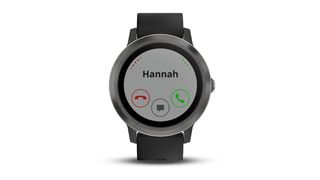
Track your phone better with the Garmin vivoactive 3
Reason #3: The Garmin vivoactive 3 is in sync with your phone better
Although you won't require your phone for exercising with the vivoactive 3, it doesn't mean they aren't connected. The Garmin vivoactive 3 can not only help locate your phone easier, it also alerts you when the battery on the phone is low.
Both the Fitbit Versa Lite and the Garmin vivoactive 3 support smart notifications, so you can see if someone messaged or called you or even check social updates, should you want to.
Fitbit Versa Lite vs Garmin vivoactive 3: verdict
The Fitbit Versa Lite is an excellent fitness tracker that will suit many – if not most – of the fitness tracking needs of people doing sports recreationally. It has a brilliant screen and in the Fitbit app, you can track your fitness and weight-loss progress, too. If you have a Fitbit Aria Air or have been using a different Fitbit product before, we recommend opting in for this fitness tracker.
The Garmin vivoactive 3, on the other hand, will suit people with a slightly more active lifestyle more. The battery lasts almost twice as long, compared to the Fitbit Versa Lite, and it has a range of sensors to meticulously measure every move you make during exercising. The screen might not be as sharp as on the Versa Lite, but it is more than adequate enough in most cases.
Since both wearables have seen an update recently, we expect some of the features from their successors to cascade down to these models too in the near future, until they are inevitably left behind for good by their manufacturers. That might still be a few years away, though.
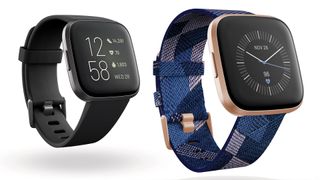
The Fitbit Versa 2 offers a voice assistant feature
Fitbit Versa Lite vs Garmin vivoactive 3: alternative options
Both the Fitbit Versa Lite and the Garmin vivoactive 3 can be considered a mid-range fitness tracker and it wouldn't take long to find models from the same or different manufacturers that are way cheaper or more expensive (depending on your preference).
There is, of course, the brand new Fitbit Versa 2, which might be slightly more expensive with its £200 price tag, but for the extra money, it has built-in Alexa voice assistant functionality, a crisp touchscreen, up to five day battery life – so slightly better than the Versa Lite – and 24/7 heart rate tracking.
The Garmin's vivoactive 3 successor, the aptly named Garmin vivoactive 4 – has an up to 8 days battery life, a bigger 1.3" display, higher screen resolution at 260 x 260 pixels and built-in gyroscope.
• Garmin flexes on Fitbit and Polar with its new fitness smartwatch range
As for cheaper options, take a look at the Chinese manufacturer Huawei's offer: the Huawei Band 3 Pro is less than half the price of the Versa Lite, yet it has built-in GPS, digital compass and a touch screen. Its battery also lasts for up to 14 days, probably because of the smaller screen size, which is adequate enough for some, but it won't rival either the Fitbit Versa Lite or the Garmin vivoactive 3's screen, for sure.
• Huawei Band 3 Pro vs Honor Band 5: which fitness tracker is best for you?
For almost the same price as the two fitness trackers in question, Polar offers its mid-range fitness tracker, the Polar Ignite. It's a bit more sportier and does it all what you'd expect from a decent fitness tracker, plus has a touch screen display as well as a built-in GPS. The Polar Ignite uses Polar's latest sensor technology, which consists of nine optical sensors on the back of the tracker plus four skin-contact sensors, too.
Battle of the wearables!
- Garmin Fenix 6 Pro vs Apple Watch Series 5: which is the better fitness smartwatch?
- Fitbit Ace 2 vs Garmin Vivofit Jr 2: which kids' activity tracker is best for you?
- Huawei Band 3 Pro vs Honor Band 5: which fitness tracker is best for you?








